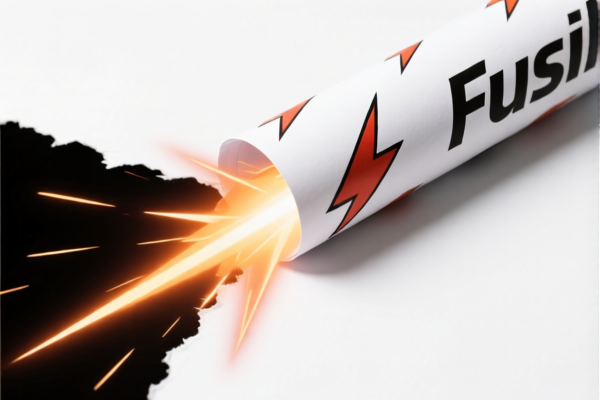| HS Code | Official Doc | Tariff Rate | Origin | Destination | Effective Date |
|---|---|---|---|---|---|
| 3813001000 | Doc | 55.0% | CN | US | 2025-05-12 |
| 3813005000 | Doc | 58.7% | CN | US | 2025-05-12 |
| 3825900100 | Doc | 55.0% | CN | US | 2025-05-12 |
| 4823901000 | Doc | 55.0% | CN | US | 2025-05-12 |
| 4823907000 | Doc | 55.0% | CN | US | 2025-05-12 |
| 4821904000 | Doc | 55.0% | CN | US | 2025-05-12 |
| 4821902000 | Doc | 55.0% | CN | US | 2025-05-12 |




Flash Paper
Flash paper is a highly flammable paper product designed to rapidly combust into a puff of smoke and leave no ash residue. It is primarily used for visual effects in magic tricks, theatrical performances, and occasionally in pyrotechnic displays.
Material
Flash paper is typically made from a thin sheet of cellulose paper impregnated with a fast-burning compound, most commonly potassium perchlorate, potassium nitrate, and a fuel source like sulfur or dextrose. The exact composition varies between manufacturers, influencing burn speed, flame color, and smoke density. The paper itself is extremely thin and fragile, easily torn or damaged.
Purpose
The primary purpose of flash paper is to create a quick, dramatic burst of flame and smoke without leaving behind any visible residue. This makes it ideal for illusions where a clean disappearance or transformation is desired.
Function
Flash paper ignites almost instantly upon contact with a small flame or spark. The rapid combustion causes the paper to quickly vaporize, leaving behind only a small amount of non-toxic smoke and a slight sulfurous odor. The speed of the burn is crucial to the effect; a slow burn diminishes the visual impact and can create a safety hazard.
Usage Scenarios
- Magic Tricks: Commonly used in effects like vanishing silk scarves, producing flames from empty hands, or creating a flash of fire during card manipulations.
- Theatrical Performances: Used for creating dramatic entrances or exits, simulating explosions or fires, or enhancing special effects.
- Pyrotechnics (Limited): Occasionally used in small-scale pyrotechnic displays, but requires careful handling and adherence to safety regulations.
- Photography/Videography: Used for creating dynamic visual effects in still photography or video productions.
Common Types
- Standard Flash Paper: The most common type, typically burns with a bright white or pale yellow flame.
- Colored Flash Paper: Available in various colors (red, blue, green, etc.) achieved by adding metallic salts to the composition. These produce colored flames.
- Slow-Burn Flash Paper: Designed to burn slightly slower, offering more control over the effect but reducing the overall dramatic impact.
- Extra-Large Sheets: Larger sheets are available for larger-scale effects.
Safety Considerations
Flash paper is highly flammable and should be handled with extreme caution.
- Always use in a well-ventilated area.
- Keep away from flammable materials.
- Never use near open flames or sparks unless intentionally igniting it.
- Store in a cool, dry place away from heat and ignition sources.
- Follow the manufacturer's instructions carefully.
- Be aware of local regulations regarding the use of flash paper.
Flash paper is not explicitly defined within the provided reference material. However, based on its composition and potential uses, the following HS codes may be relevant:
-
3813001000: Preparations and charges for fire extinguishers; charged fire-extinguishing grenades: Consisting wholly of inorganic substances.
- 38: Chemical and allied industries products.
- 13: Preparations and charges for fire extinguishers; charged fire-extinguishing grenades.
- 00: Further specifies the product.
- This code applies to fire extinguishing preparations, and flash paper, if used for pyrotechnic effects resembling fire, could fall under this category if its composition is entirely inorganic. The base tariff is 0.0%, with an additional tariff of 25.0% (increasing to 30% after April 2, 2025), resulting in a total tariff of 55.0%.
-
4823901000: Other paper, paperboard, cellulose wadding and webs of cellulose fibers, cut to size or shape; other articles of paper pulp, paper, paperboard, cellulose wadding or webs of cellulose fibers: Other: Of paper pulp.
- 48: Paper and paperboard.
- 23: Other paper, paperboard, cellulose wadding and webs of cellulose fibers.
- 90: Other articles.
- 10: Of paper pulp.
- If flash paper is primarily composed of paper pulp and is cut to a specific size or shape, this HS code may be applicable. The base tariff is 0.0%, with an additional tariff of 25.0% (increasing to 30% after April 2, 2025), resulting in a total tariff of 55.0%.
-
4823907000: Other paper, paperboard, cellulose wadding and webs of cellulose fibers, cut to size or shape; other articles of paper pulp, paper, paperboard, cellulose wadding or webs of cellulose fibers: Other: Other: Other: Of cellulose wadding.
- 48: Paper and paperboard.
- 23: Other paper, paperboard, cellulose wadding and webs of cellulose fibers.
- 90: Other articles.
- 70: Of cellulose wadding.
- If flash paper is primarily composed of cellulose wadding and is cut to a specific size or shape, this HS code may be applicable. The base tariff is 0.0%, with an additional tariff of 25.0% (increasing to 30% after April 2, 2025), resulting in a total tariff of 55.0%.
According to the provided reference material, the HS code options related to 'flash paper' are limited, with only the following 3 found. It is crucial to determine the precise composition of the flash paper (inorganic substances, paper pulp, or cellulose wadding) to select the most accurate HS code.
Customer Reviews
No reviews yet.